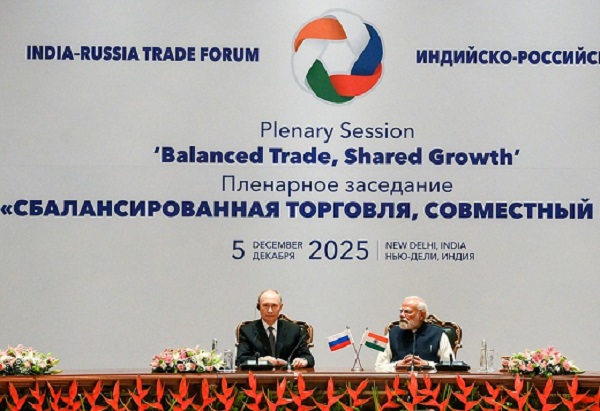.png)
March 19, 2025 at 4:02 PM IST
The Reserve Bank of India’s researchers have flagged rising risks from global economic uncertainty, sustained foreign portfolio outflows, and rupee depreciation, even as domestic growth momentum remains intact.
In the latest “State of the Economy” article in RBI’s monthly bulletin, the central bank economists warned that external volatility could spill over into India's financial markets, complicating the outlook for monetary policy.
The global economic landscape has turned more uncertain, with rising trade disruptions, shifting capital flows, and renewed geopolitical tensions. These factors have heightened financial market stress, as seen in the sharp movements across global equities, bonds, and currencies, they said.
The RBI leadership and MPC members are not formally swayed by the central bank’s internal research notes.
Market Pressures
Trade tensions have intensified, with the United States, China, Canada, and Mexico locked in tariff disputes that threaten to push US inflation higher by 1.0%-1.2% and shave 0.6% off US GDP growth in 2025. This has already weighed on global financial markets, erasing US dollar’s gains since November and sending European bond yields soaring as governments ramp up military spending, particularly in Germany.
Amid this turmoil, India’s external position has come under pressure. Foreign portfolio investors pulled out $4.0 billion in February, with equity outflows at $5.4 billion, as global funds moved to safer assets or reallocated towards Chinese markets. The rupee has faced depreciation risks, although its losses have been contained compared with past episodes. India’s foreign exchange reserves, which stand at $654 billion, have provided a buffer, covering over 11 months of imports and 91% of external debt.
Merchandise exports have weakened, contracting 10.9% in February, led by declines in petroleum, engineering goods, and chemicals. Exports to 14 of India’s 20 key markets declined, with shipments to the US, China, and the UK falling sharply.
Despite strong performances in electronics and pharmaceuticals, the drop in key industrial exports has weighed on overall trade. The trade deficit narrowed to $14.1 billion in February due to lower oil and non-oil imports, though the cumulative gap for the fiscal year remains wider than a year ago, the RBI economists noted.
The global divergence in monetary policy is adding to volatility. While the European Central Bank, Bank of Canada, and Bank of England have begun easing, the US Federal Reserve remains cautious amid persistent inflation pressures. The RBI noted that this divergence could increase capital flow fluctuations for emerging markets like India. Meanwhile, Indian companies have tapped into lower global financing costs, with external commercial borrowing inflows more than doubling in the past year.
Policy Response
Despite external risks, India’s economy has remained resilient, with GDP expanding by 6.2% in the December quarter, supported by strong consumption and government spending. However, pockets of weakness have emerged, particularly in manufacturing. While private consumption continues to drive growth, recent trends in employment, rural demand, and industrial activity suggest some moderation.
Inflation has softened, with headline CPI easing to 3.6% in February, the lowest in seven months, driven by a sharp fall in food prices. Yet core inflation edged up to 4.1%, reflecting underlying demand pressures. The RBI has actively managed liquidity through open market operations, rupee-dollar swaps, and variable rate repo auctions to counteract fiscal flows and foreign investor withdrawals. Domestic investors have stepped in, increasing their equity holdings and partially offsetting FPI outflows, while systematic investment plan inflows into mutual funds remain strong.
Financial stability remains a key focus, with the RBI navigating tax-related liquidity fluctuations, capital flow volatility, and external shocks.
The expansion of digital transactions and trade financing platforms has supported businesses, while India’s payment ecosystem continues to deepen. With external risks persisting, the RBI remains watchful, ensuring sufficient liquidity while responding to emerging threats.
While the global backdrop remains uncertain, India’s economic fundamentals offer a buffer. The resilience of domestic demand, a strong financial system, and proactive policy measures have helped contain external shocks so far. However, as trade disruptions, currency pressures, and capital outflows continue, navigating the coming months will require sustained vigilance.
One might see the RBI researchers' article as a subtle caution against rushing into rate cuts. Officially, however, they have merely presented data and insights.




